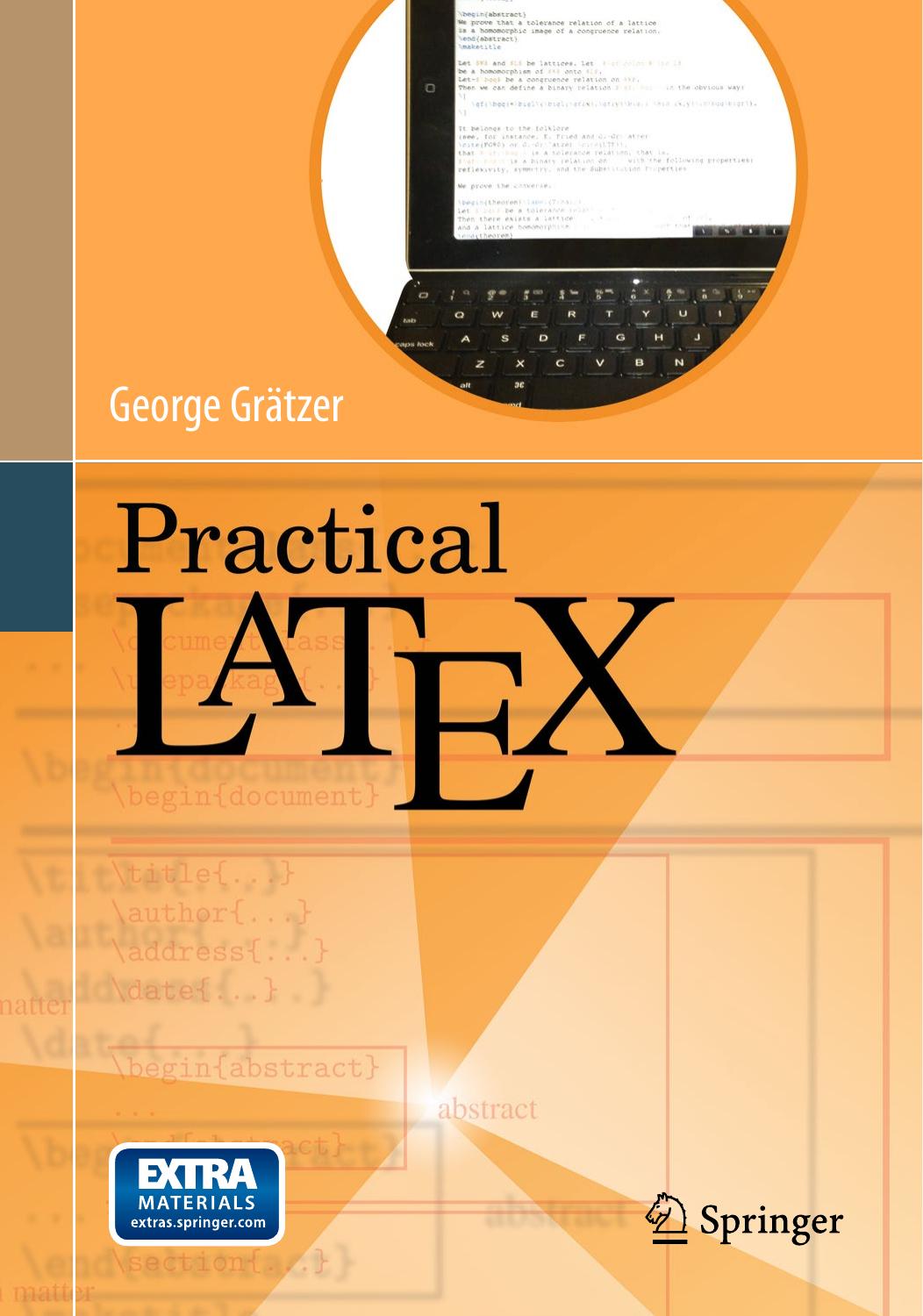Practical LaTeX by George Grätzer

Author:George Grätzer
Language: eng
Format: epub, pdf
Publisher: Springer International Publishing, Cham
6.4.2 Floating tables and illustrations
Many documents contain tables and illustrations. These must be treated in a special way since they cannot be broken across pages. If necessary, LaTeX moves—floats—a table or an illustration to the top or bottom of the current or the next page if possible and further away if not.
LaTeX provides the table and the figure environments for typesetting floats. The two are identical except that the figure environments are captioned Figure 1, Figure 2, and so on, whereas the table environments are numbered as Table 1, Table 2, and so on.
Tables
A table environment is set up as follows:
\begin{table}
\caption{title}\label{Ta:xxx}
Place the table here
\end{table}
The \caption command is optional and should precede the table. The optional \label command must follow the command \caption. The label is used to reference the table’s number. A table environment can have more than one table, each with its own caption.
The table environment is primarily used for tables made with the tabular environment; see Section 3.5. There are many examples of tables in this book.
Figures
Illustrations, also called graphics or figures, include drawings, scanned images, digitized photos, and so on. These can be inserted with a figure environment. Using the graphicx package, a typical figure is specified as follows:
\begin{figure}
\centering\includegraphics{file}
\caption{title }\label{Fi:xxx}
\end{figure}
The illustration circle.pdf is included with the command
\includegraphics{circle}
without the extension.
If you have to scale circle.pdf, say to 68% of its original size, use the command
\includegraphics[scale=.68]{circle}
Download
This site does not store any files on its server. We only index and link to content provided by other sites. Please contact the content providers to delete copyright contents if any and email us, we'll remove relevant links or contents immediately.
| Applied | Geometry & Topology |
| History | Infinity |
| Mathematical Analysis | Matrices |
| Number Systems | Popular & Elementary |
| Pure Mathematics | Reference |
| Research | Study & Teaching |
| Transformations | Trigonometry |
Modelling of Convective Heat and Mass Transfer in Rotating Flows by Igor V. Shevchuk(6391)
Weapons of Math Destruction by Cathy O'Neil(6139)
Factfulness: Ten Reasons We're Wrong About the World – and Why Things Are Better Than You Think by Hans Rosling(4691)
Descartes' Error by Antonio Damasio(3229)
A Mind For Numbers: How to Excel at Math and Science (Even If You Flunked Algebra) by Barbara Oakley(3217)
Factfulness_Ten Reasons We're Wrong About the World_and Why Things Are Better Than You Think by Hans Rosling(3197)
TCP IP by Todd Lammle(3130)
Fooled by Randomness: The Hidden Role of Chance in Life and in the Markets by Nassim Nicholas Taleb(3043)
Applied Predictive Modeling by Max Kuhn & Kjell Johnson(3018)
The Tyranny of Metrics by Jerry Z. Muller(3000)
The Book of Numbers by Peter Bentley(2907)
The Great Unknown by Marcus du Sautoy(2645)
Once Upon an Algorithm by Martin Erwig(2597)
Easy Algebra Step-by-Step by Sandra Luna McCune(2577)
Lady Luck by Kristen Ashley(2528)
Practical Guide To Principal Component Methods in R (Multivariate Analysis Book 2) by Alboukadel Kassambara(2497)
Police Exams Prep 2018-2019 by Kaplan Test Prep(2481)
All Things Reconsidered by Bill Thompson III(2354)
Linear Time-Invariant Systems, Behaviors and Modules by Ulrich Oberst & Martin Scheicher & Ingrid Scheicher(2331)
